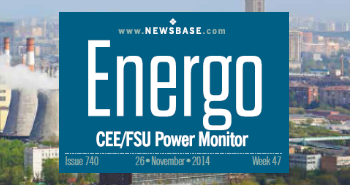Poland, Romania and Bulgaria face highest decarbonisation transition risks, says Fitch

Central and Eastern Europe countries face higher decarbonisation challenges than Western Europe, and Poland, Bulgaria and Romania have the highest transition risks in CEE, according to a report by Fitch Ratings last week.
“For sovereigns identified as being more vulnerable to climate change decarbonisation risks (assuming sufficient materiality) – the most exposed sovereign in this context is Poland. For sovereigns identified as having the highest investment gap needs – the most exposed sovereigns in this context are Romania and Bulgaria, followed by Slovenia,” concluded the report “Impact on CEE Sovereigns of Climate Change Decarbonisation Transition Risks”.
Fitch says CEE countries’ national energy and climate plans estimate their investment needs averaging 3.9% of GDP a year until 2030. For most CEE sovereigns the transition cost to a lower-carbon economy is judged “generally manageable”, with the majority of the cost expected to be met by the private sector, as well as by the EU.
However, the Fitch report points out that this spending need is taking place at a time when public finances are already stressed because of the COVID-19 pandemic and help given to citizens and companies to cope with the soaring cost of energy. It says that “some downward pressure on ratings could materialise for sovereigns with the greatest vulnerability to decarbonisation transition risks”.
According to Fitch, in 2020-2022 the CEE general government deficit median was 4.3%, versus 1.7% of GDP in 2016-2019. It forecasts only very modest consolidation in 2023-2024 (3.8%) as governments continue to support households and firms.
At the same time, many countries in the region have pledged to increase defence spending by 1-2pp of GDP over the next decade given the Russian attack on Ukraine, while some have to contend with potentially very high ageing costs over the medium to long term, Fitch points out.
Government debt levels in the region increased to an average of 50.4% of GDP in 2021-2022, compared to 46.5% in 2016-2019, Fitch estimates. It predicts a “very slight improvement” in the debt ratio in 2023-2024 because of rising GDP growth.
Under a “transition scenario”, where decarbonisation costs are frontloaded, the whole region would record public debt levels 7pp higher on average compared to Fitch’s baseline in 2030. “This debt increase is not insignificant but is below the changes seen during the COVID-19 pandemic, for example,” it says.

Poland is seen as one of the countries that is most vulnerable to decarbonisation transition risks because it has the heaviest reliance on coal-burning power generation in the EU (70% of total generation) and the lowest generation in CEE from clean energy technologies. Many of its industries are relatively energy inefficient and it is the furthest from meeting its emission targets.
Bulgaria and Romania are also vulnerable, mainly because of their investment needs are as high as 7% of GDP. This creates investment gaps in Bulgaria and Romania that are behind only Portugal in Europe
“Romania and Bulgaria, which have identified the highest fiscal pressures from decarbonisation, would experience the biggest negative impact on their debt dynamics compared to our current baseline. Slovenia will follow closely,” the report says.




Follow us online